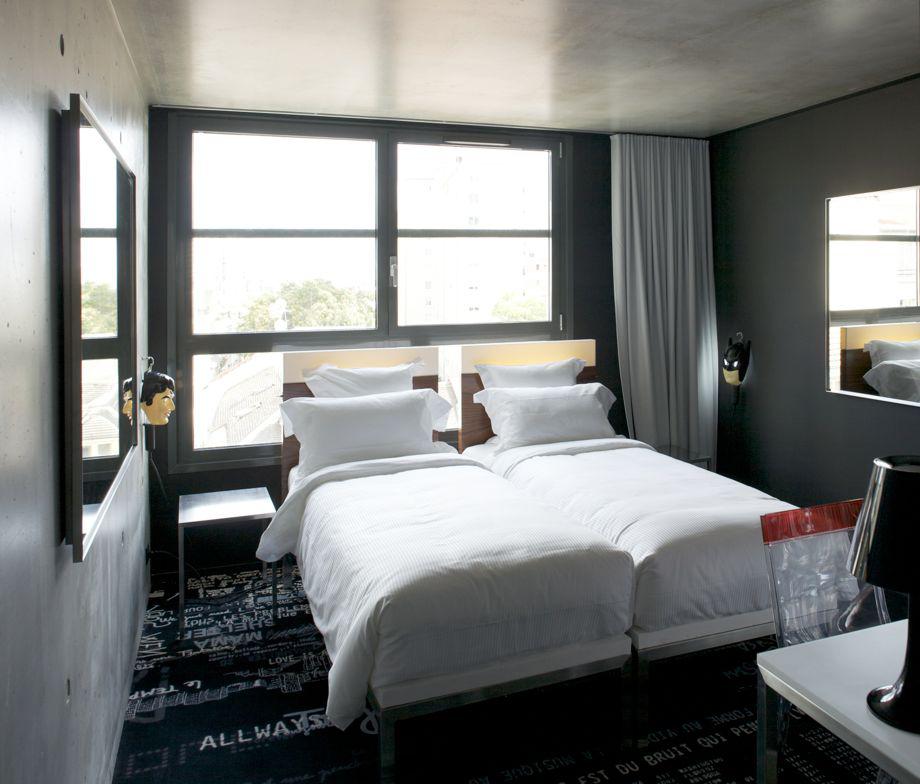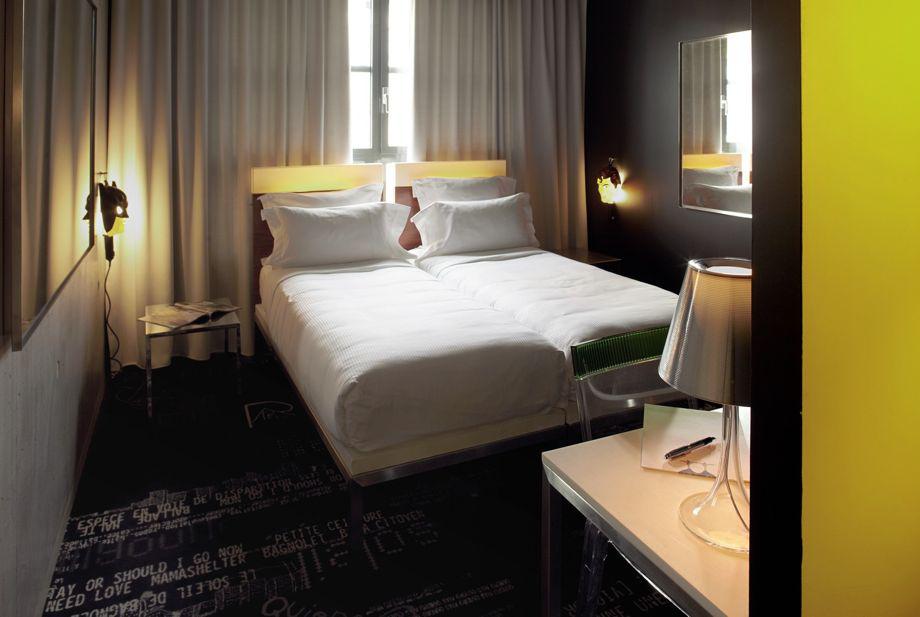I had the French designer Philippe Starck on the phone for a recent interview and he was talking about big ideas. When I pressed for details about some of the new projects he was working on, the prolific, 1000-mile-an-hour designer joked that he couldn’t even remember what he had done yesterday.
So I took a detour and reminded Starck of a trick that he had employed at the Mama Shelter hotel in Paris, where he transformed a multi-level parking structure into a hip design mecca in the outlying 20th arrondissement.
Starck had expanded the narrow confines of the hotel’s small rooms (think queen-sized bed parked where the car might once have been) by placing identical mirrors at the same height on opposing walls. One of those walls was painted dark, the other was the color of pale concrete.

Photo by Francis Amiand
When you entered the room, you might have noticed the simple mirrors doing what mirrors do for a small space: amplifying the light and creating an illusion of depth and more virtual square footage.
But once you moved into the room and turned to face one of the side walls, you were confronted with a glimpse not only of your own image, but an optical illusion: The dark wall and the mirror containing your silhouette reflected in the opposing mirror in a series of gradually diminishing repetitions that slipped away into the distance.

Photo by Francis Amiand
It was surprising and funny, and lifted my spirits. I made a mental note that it was something that anybody could do on a modest budget to make their space seem a little bigger and a bit more playful.
I mentioned it to Starck in the context of having passed this clever bit of space-enhancing magic on to a friend with a windowless Brooklyn mancave. Then Starck revealed another layer of meaning to his sleight of hand.
“On first reading, it’s about space,” he told me. “But the real truth is that it leads us toward infinity. There are few moments in life when we can see a door open to infinity. I love that kind of detail, because simply with two mirrors you can enter into another dimension.”
That kind of expansive thought and intention behind what appears to be a purely aesthetic gesture is the mark of a great designer. Starck’s witty trick in a budget hotel room is a testimony to the value in thinking beyond the obvious, and injecting our own spaces with a sense of intrigue and wonder.
“When I say I’m not a decorator it’s true,” Starck said. “Everything I do has a function. My work isn’t to make things pretty, it’s to constantly introduce fertile surprises––so that wherever you look, there’s a kind of mental game that you can choose to play or not to play. If you play, it will work your head, it will bring you down a path, make you think or dream. And then you will look elsewhere and there will be another mind game that will take you somewhere else. That’s the service we should give to people who work all day, who come home to a hotel room and feel alone and who deserve to have more than just pretty wallpaper.”
